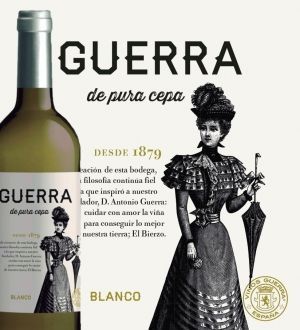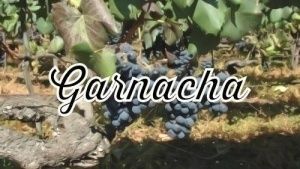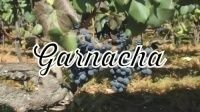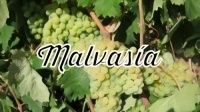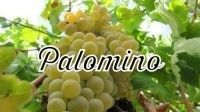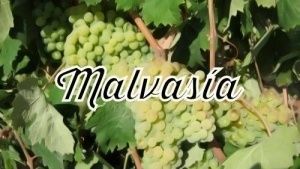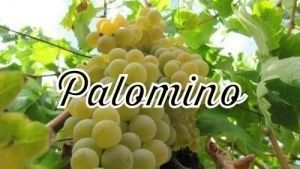Super User
De Pura Cepa Red Mencia
| | An unoaked red to enjoy an exuberant Mencía: mineral, herbal and fresh. Red fruit and herbal notes. An all-purpose wine to pair with almost any kind of dish. |
|
 |  |  |  |  |


|
De Pura Cepa White
|  |
 |  |  |  |  |

![]()
|
Garnacha
Alicante Bouschet is one of the few varietals with a tinged flesh, which has a deep purple colour. The phenolic content is high, as it’s not only present in the skin. The wines produced with this grape variety are usually powerful with a grassy and bitter finish together with a balanced acidity and alcohol. The malolactic fermentation softens the tannins and the grassy finish and therefore the wines get rounder. Another good option for this variety is the ageing in oak, as long as it’s not excessive. Most wines of Alicante Bouschet are aromatic (mainly resin and black fruit), thick and with a big mouthfeel. It’s a productive grape that allows severe pruning and which may easily be grown on a trellis system. Its cycle is not short and it’s not very resistant to fungal diseases. Particularly sensitive to downy mildew, excoriosis, grape moth, but less to botrytis and mites.

AMPELOGRAPHIC DETAILS |
YOUNG SHOOTS
Distribution of anthocyanin pigmentation (shoot tips) | Quite important (deep red) |
Fuzz (or hair) density (shoot tips) | High |
SHOOTS
Growth | Semi-creeping |
Back side internode colour | Green with deep red lines |
Internodes fuzz (or hair) density | Low |
In August, shoots turn to yellowish light brown and deeply grooved. |
TENDRILS
Length | Long |
VINE STOCK
Vigour | Medium |
Growth | Rather recumbent |
Budbreak | Medium cycle |
Ripening | Early |
ADULT LEAF
Size | Medium |
Leaf blade shape | Orbicular hardly lobed |
Swelling on the upper side | Curved edges towards the underside |
Serrations (shape and length) | Straight, small and sharp |
Petiolar sinus shape | V-shaped (barely opened) |
Petiole (shape and colour) | Cylindrical, long and reddish green |
Anthocyanin pigmentation of underside main veins | Tinged |
FOLIAR SINUS | |
Fuzz (or hair) density between veins (bent hairs) | Scarce |
Fuzz (or hair) density between veins (upright hairs) | Scarce |
BUNCH / CLUSTER
Size and compactness | Medium |
Petiole length | Short |
BERRY
Size | Medium |
Shape | Spherical |
Point of rupture | Spherical and clearly apparent |
Skin colour and thickness | Bluish black and thick |
Anthocyanin pigmentation of flesh | Highly tinged (purple) |
Special flavours | Neutral |
Pedicel detachment | Easy |
Seeds | Yes |
Main colour (without visible surface bloom) | Purplish black |
|
Mencia
Mencía is the main grape variety of the appellation Bierzo and has been grown in the northwest of Spain since the Romans. After the phylloxera plague that destroyed most of the European vineyards in the 19th century, Mencía became more and more common to produce aromatic and fruity wines with deep colour (it was even believed to be a clone of Cabernet Franc, which was introduced in Galicia in the 19th century). Mencía is also widely grown in the southeast of Galicia (Ribeira Sacra, Valdeorras and Monterrei) and in Portugal (where it’s called Jaen). Mencía is a productive variety that allows severe pruning and which may easily be grown on a trellis system. It’s not resistant to fungal diseases (botrytis is common in bush vines as well as downy and powdery mildew) and it’s also sensitive to grape moth, but less to mites.

AMPELOGRAPHIC DETAILS |
YOUNG SHOOTS
Distribution of anthocyanin pigmentation (shoot tips) | Scarce |
Fuzz (or hair) density (shoot tips) | Scarce |
SHOOTS
Growth | Semi-upright |
Back side internode colour | Green |
Internodes fuzz (or hair) density | Scarce to medium |
In August, shoots turn to light brown and deeply grooved with poor ramification and relevant nodes. |
TENDRILS
Length | Medium |
VINE STOCK
Vigour | Medium |
Growth | Vertical tendency |
Budbreak | Short cycle |
Ripening | Medium cycle |
ADULT LEAF
Size | Medium |
Leaf blade shape | Pentagonal lobed blade with 5 lobes hardly defined |
Swelling on the upper side | Slightly curved |
Serrations (shape and length) | Scarce and convex with rounded teeth |
Petiolar sinus shape | Half-open V-shaped |
Petiole (shape and colour) | Pale green with pinkish nuances |
Anthocyanin pigmentation of underside main veins | None |
FOLIAR SINUS | |
Fuzz (or hair) density between veins (bent hairs) | Scarce, isolated glomeruli, woolly |
Fuzz (or hair) density between veins (upright hairs) | Scarce |
BUNCH / CLUSTER
Size and compactness | Medium sized and medium compact. Berries with uniform colour and size |
Petiole length | Very short and hardly lignified |
BERRY
Size | Medium |
Shape | Elliptic acuminate |
Point of rupture | Spherical with deep scar |
Skin colour and thickness | Greyish blue. Thick and tight |
Anthocyanin pigmentation of flesh | None |
Special flavours | Scarce |
Pedicel detachment | Difficult |
Seeds | Yes |
Main colour (without visible surface bloom) | Bluish deep red garnet |
Malvasia
Malvasía is a grape variety also grown in Bierzo, but not among the main. Wines produced with Malvasía are very aromatic with a sweet and pleasant mouthfeel. However, it’s mainly used to produce sweet, fortified and wines aged in oak as well as sparkling wines. Compared to others, Malvasía is not very productive. Its bunches are rather big and its berries medium-sized with a golden yellowish colour. Malvasía is specially comfortable with mild climates as it suffers when conditions get too dry or rainfall is abundant. It’s a delicate variety not resistant to downy mildew, botrytis, mites, grape moth and powdery mildew.
Palomino
Introduced in the 16th century by the troops of Flanders, Palomino is the main variety in the south of Spain to produce the unique wines of the Sherry area. However, it’s widely grown throughout Spain for its high productive potential. In the old vineyards of Bierzo, Palomino grows together with Godello, Doña Blanca, Mencía and Alicante Bouschet. With a pale yellow colour and low acidity, wines produced with Palomino are light and not very aromatic (subtle grassy notes). It’s resistant to drought, but sensitive to downy mildew, powdery mildew and grape moth.
Dona Blanca
Indigenous grape of Bierzo, Doña Blanca is also grown in Ribeira Sacra (between the provinces of Orense and Lugo, where this variety is called Moza Fresca), but also further south in the driest part of Castilla y León down to Extremadura, where the poor and sandy soils of the area of Castuera are specially suitable to this variety (D.O. Ribera del Guadiana), as well as in Portugal (where it’s called Dona Branca).
Wines produced with Doña Blanca are fruity with a mouthfeel almost similar to a semi-sparkling wine that gives them a touch of crispy elegance. Variety usually blended with others, as its citrus aromas get more intense during the cold maceration and are really appreciated to produce wines to drink over the first year. It’s a productive variety with rather big bunches that allows several pressings with a good production. Medium-sized and elliptic berries with a yellowish green colour with spots. It’s highly resistant to downy mildew, but not to powdery mildew, botrytis, grape moth and mites.
 Paseo de la constitución 106. 24540 Cacabelos (León) Spain
Paseo de la constitución 106. 24540 Cacabelos (León) Spain +34
+34 
 vinosdelbierzo
vinosdelbierzo















